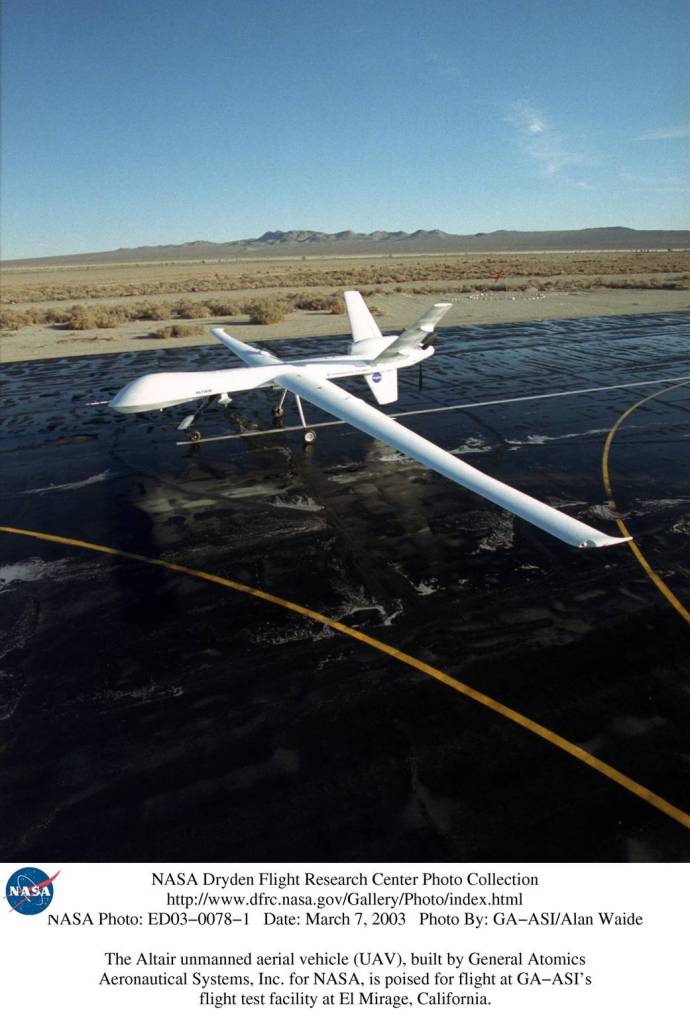
The Altair unmanned aerial vehicle (UAV), built by General Atomics Aeronautical Systems, Inc. for NASA, is poised for flight at…
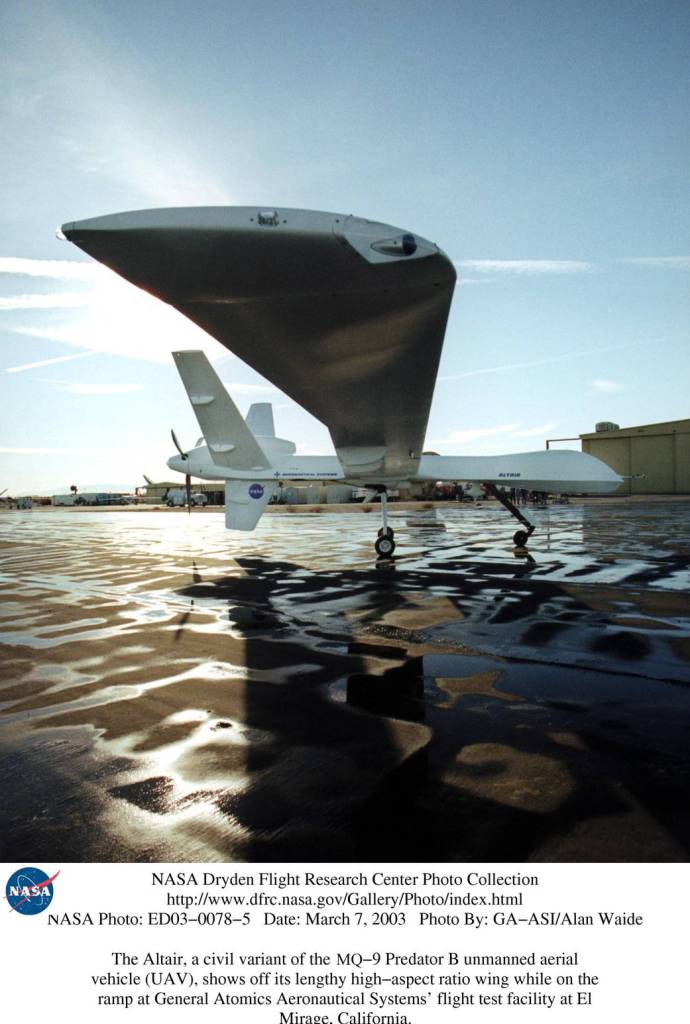
The Altair, a civil variant of the MQ-9 Predator B unmanned aerial vehicle (UAV), shows off its lengthy high-aspect ratio…
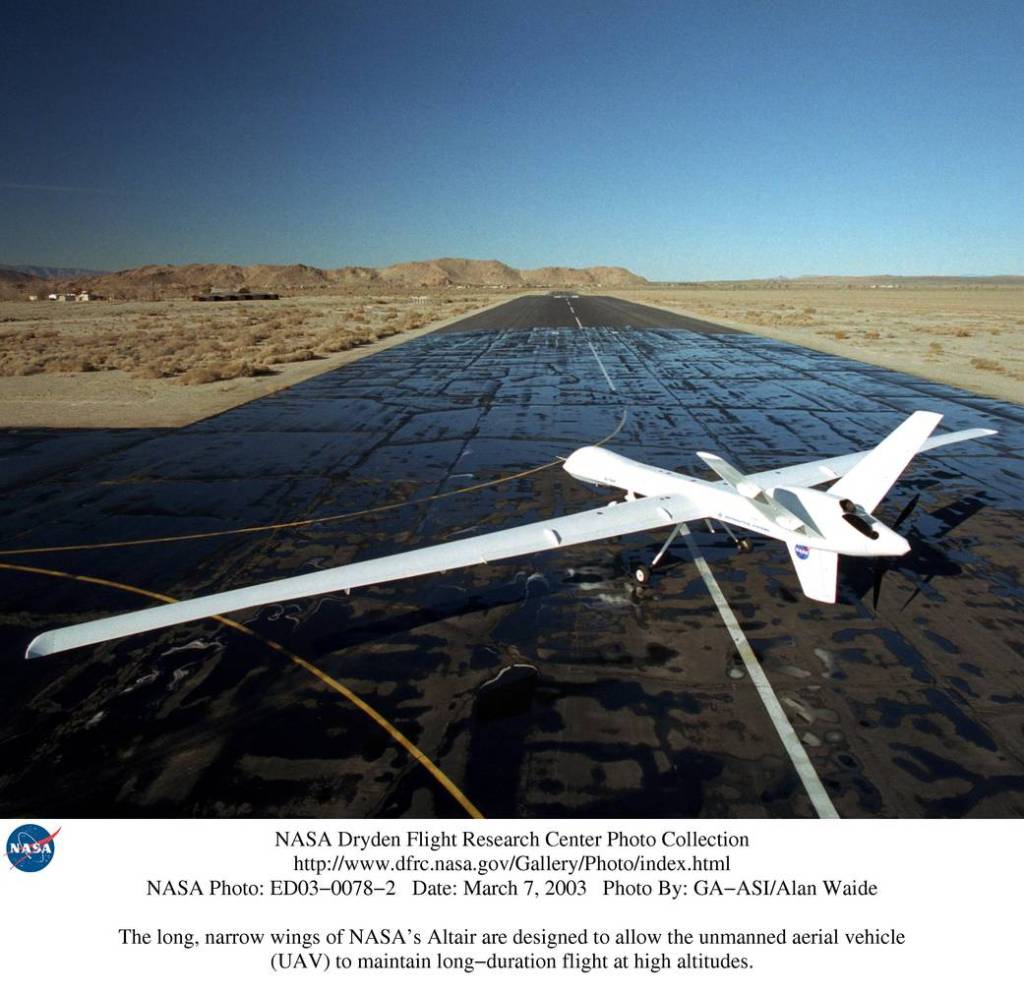
The long, narrow wings of NASA's Altair are designed to allow the unmanned aerial vehicle (UAV) to maintain long-duration flight…

Long wings, a V-tail with a ventral fin, and a rear-mounted engine distinguish the Altair, an unmanned aerial vehicle built…

NASA Dryden's Automated Aerial Refueling (AAR) project evaluated the capability of an F/A-18A aircraft as an in-flight refueling tanker with…
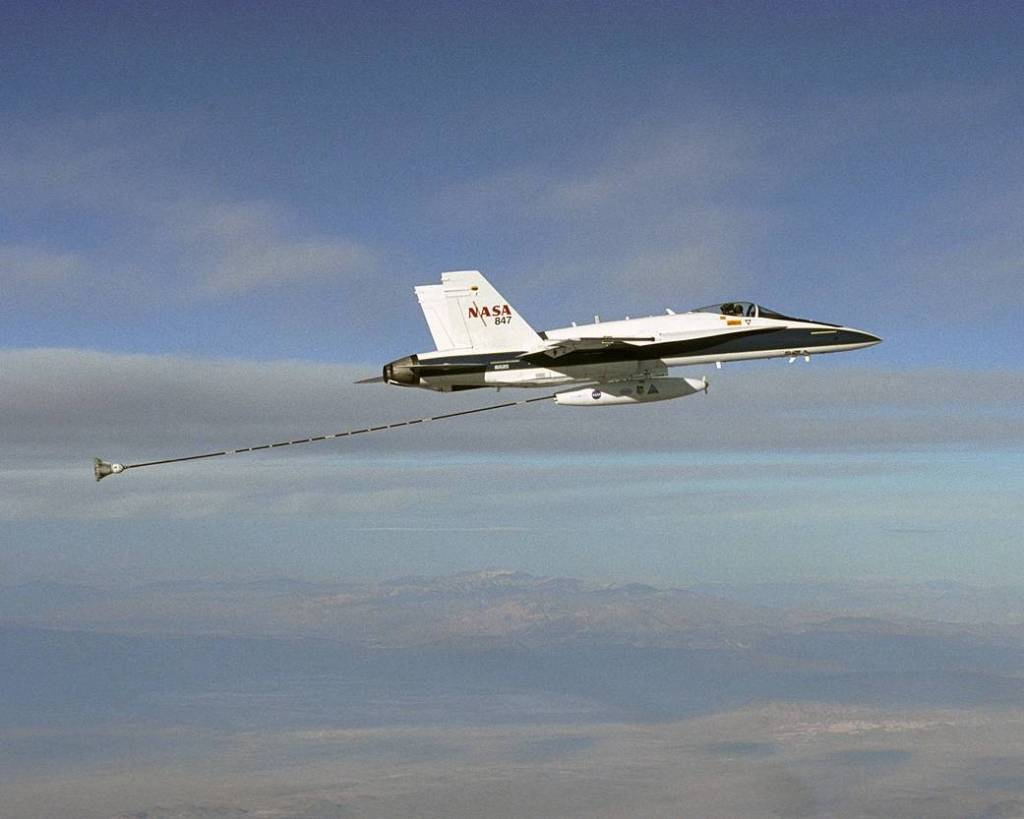
A NASA Dryden F/A-18 participated in the Automated Aerial Refueling (AAR) project. F/A-18 (No. 847) acted as an in-flight refueling…
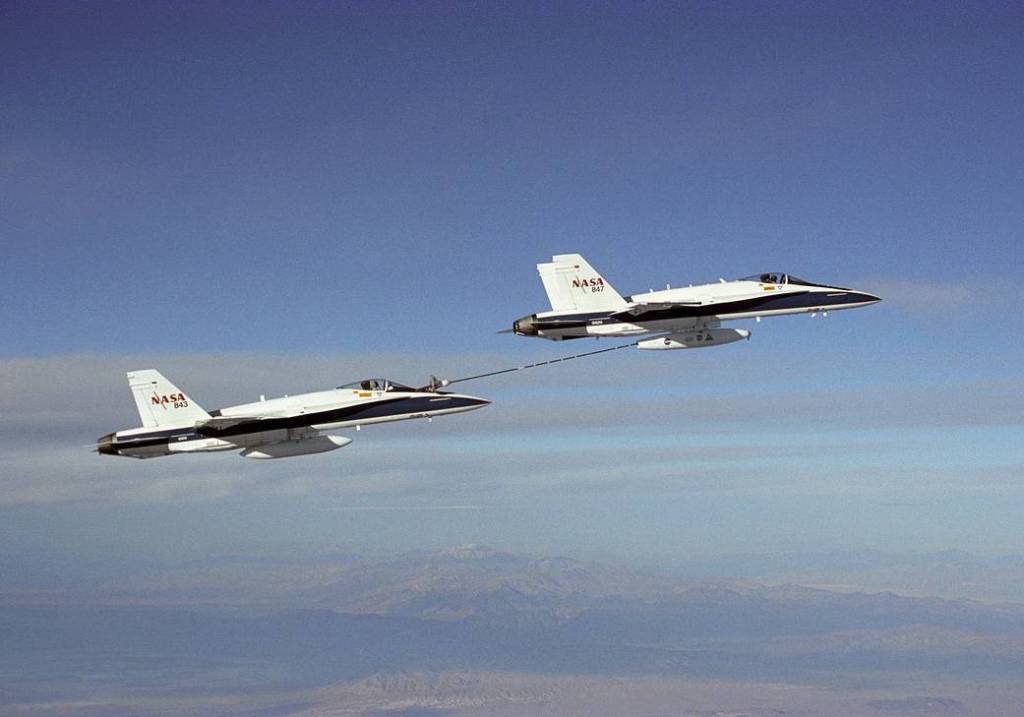
NASA Dryden's Automated Aerial Refueling (AAR) project evaluated the capability of an F/A-18A aircraft as an in-flight refueling tanker with…
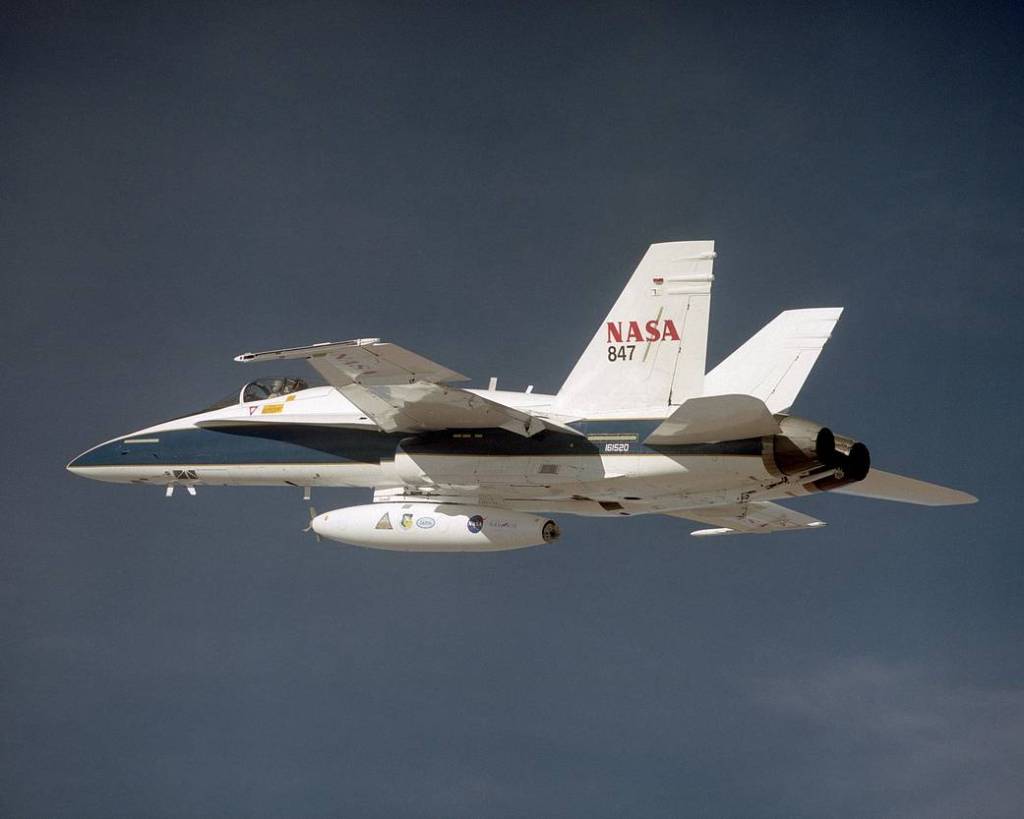
A NASA F/A-18 flew over the Dryden Flight Research Center and Rogers Dry Lake on December 11, 2002. The aircraft…
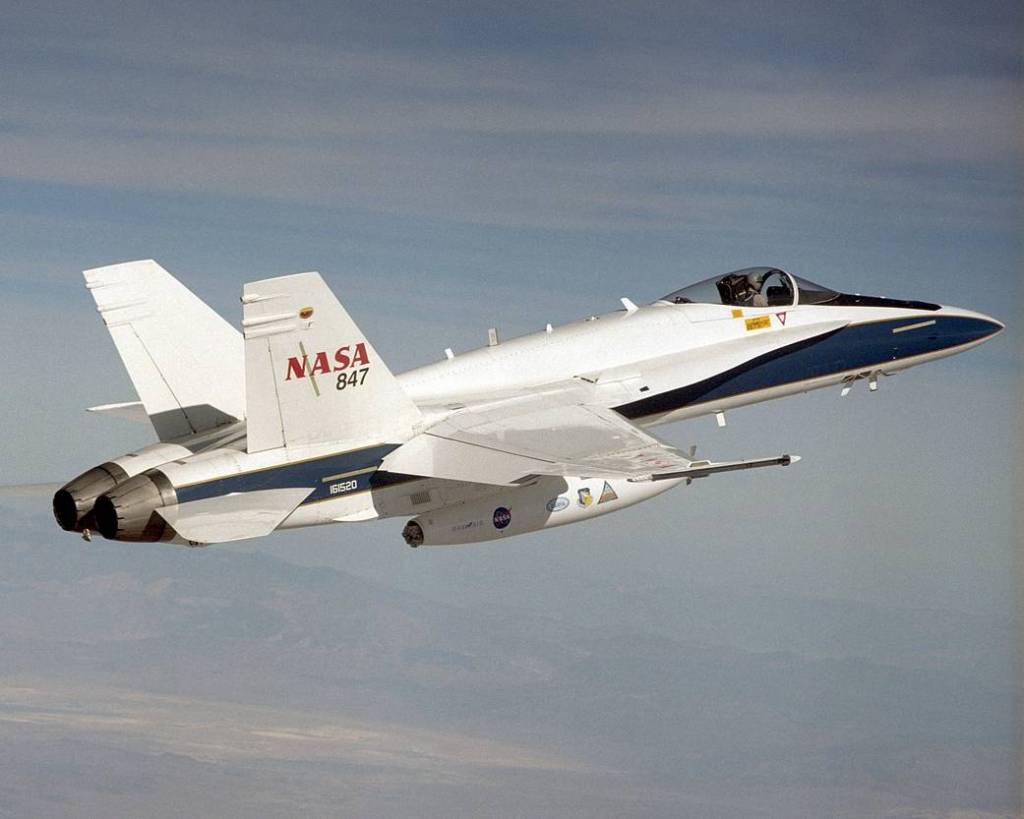
A NASA F/A-18 flies over the Dryden Flight Research Center and Rogers Dry Lake on December 11, 2002. The aircraft…
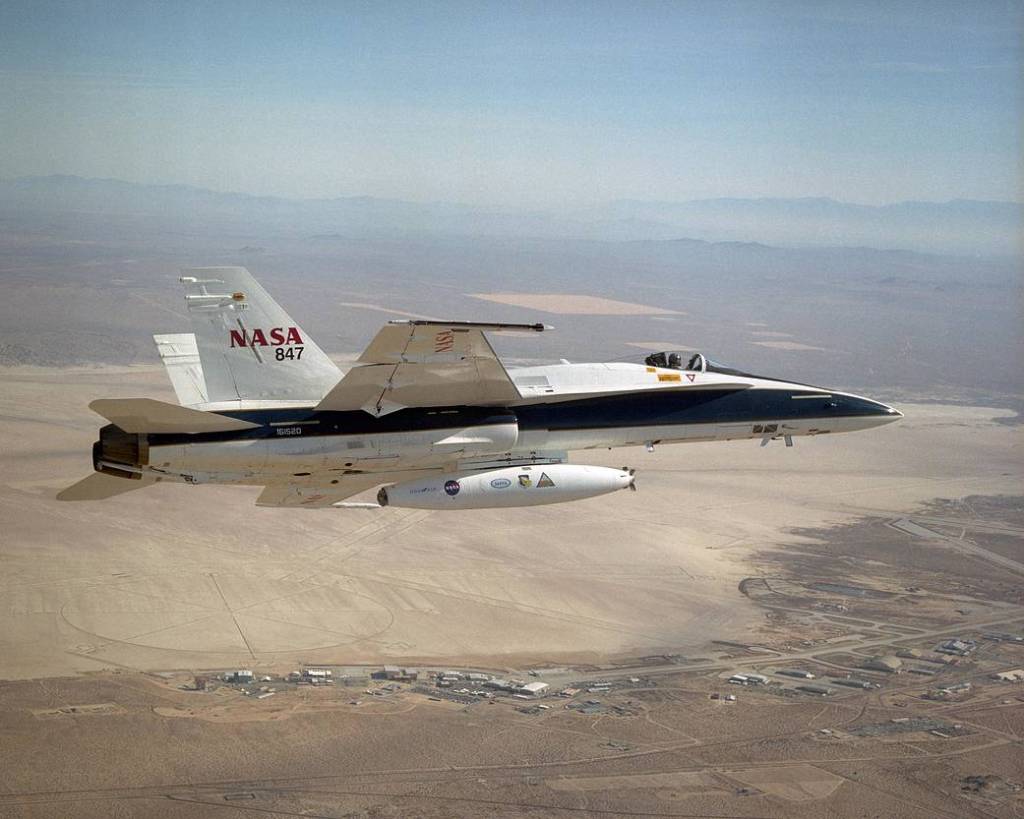
A NASA F/A-18 flew over the Dryden Flight Research Center and Rogers Dry Lake on December 11, 2002.